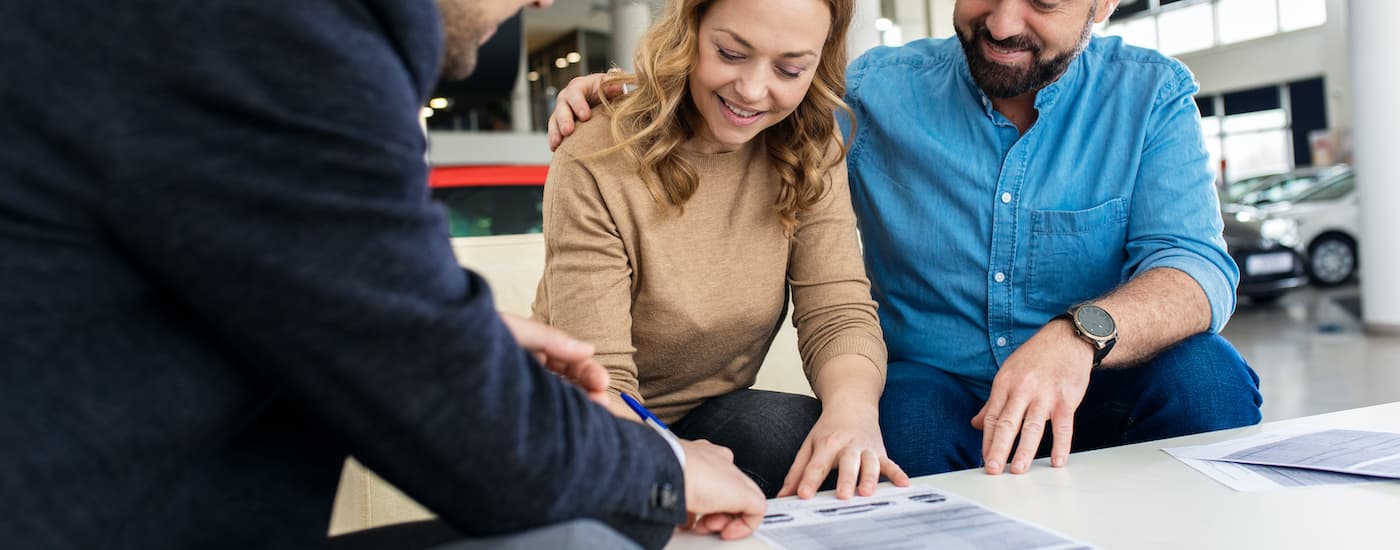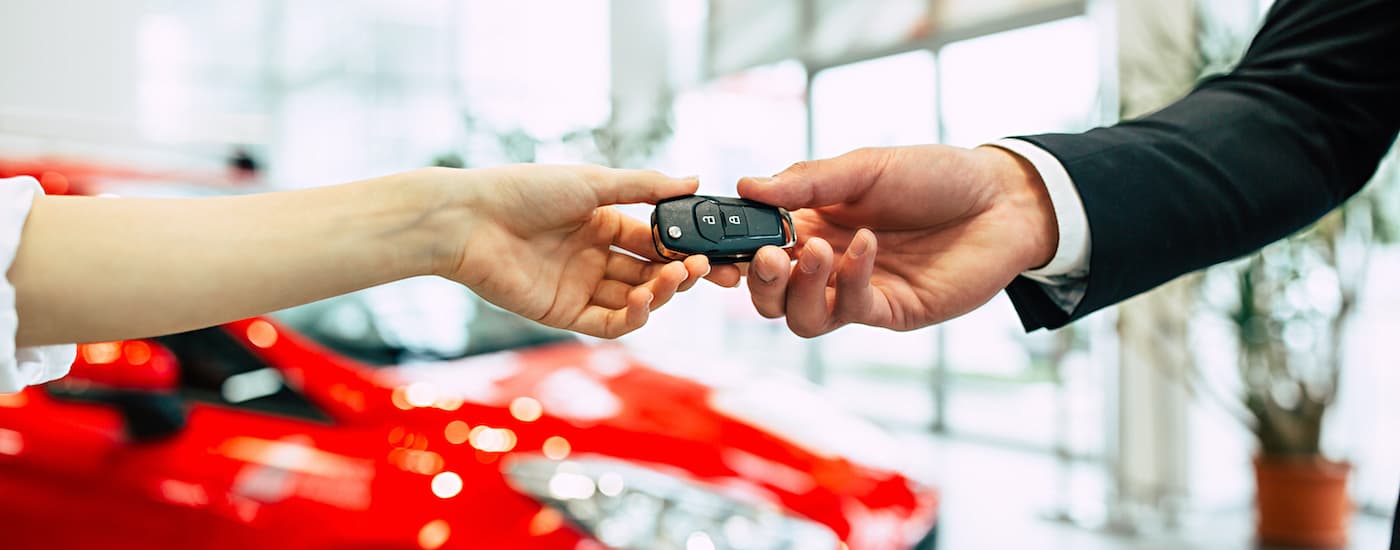Sell My Car
There comes a time when the car you drive just doesn’t cut it any longer. The signs are there: poor fuel economy, lazy technology, high maintenance costs, and an exterior body that doesn’t turn heads like it used to. Or maybe, you’re just ready for a refresher. Top auto companies like Chevrolet introduce newer, quicker, tougher, and more economical versions of their popular lineup each year. However you arrive at your decision, you’ll someday come to realize: “It’s time to sell my car.”
So what happens next? You may be dreading the long list of errands to get your old car off your hands—as much as you look forward to finding your next companion to the open road. Thankfully, selling a car is fairly easy—that is, if you look in the right place. Close those social media apps with risky marketplaces. Exit your tab with search results for salvage yards and junk lots. There’s a faster, easier, and more lucrative way to sell your old car: hand it over to a new and used car dealer. Here’s why.
Why You Should Sell Your Car to a Dealership
Many auto dealerships actually purchase as many vehicles as they sell. Dealerships obtain used inventory from auto manufacturers and auctions but also accept used cars from drivers like you. They offer fast, attractive offers so you can walk away with cash in no time. All you have to do to get started is contact a reputable dealership like Jay Hatfield Chevrolet.
Best of all, there is no obligation to buy when you sell your car to a dealership. At Jay Hatfield Chevrolet, we will gladly purchase your used car, even if you don’t plan on shopping with us. However, if you’re looking for a newer, better-quality version of your used vehicle, you’re in the right place. We will gladly show you similar options in your price range.
You may be thinking, “Aren’t there other, faster ways to sell my car?” Your other options may be plentiful, but they definitely are not wise. Take, for one, the popular route of selling your car to a private buyer. You handle the sale with no middleman and less paperwork. There are many ways to approach this type of deal, including social media apps and classified listings.
There are many problems with this route. First of all, you open yourself up to scam sales, in which someone agrees to meet you with a predetermined offer and then undercuts your deal and pressures you to accept. They may even request to run a used car inspection, then claim it’s worth far less than its listed price. There is even the possibility of outright car theft or other financial scams. The lack of an official, regulated process may seem like a shortcut to quick cash. However, it also opens you up to too many risks.
Another option to sell your vehicle is to approach a salvage lot. Just about any “We Buy Old Cars Fast” ad you see directs to one of these businesses. Salvage lots (also known as junkyards) purchase old vehicles, then list them for sale to the public in their lots. They may even make your used car available to savvy auto enthusiasts who can strip your car for cheap parts.
The problem with this selling option—besides the tragic image of your car being torn to shreds—is that it’s the least lucrative way to sell. Salvage lots, like pawn shops, buy their products at the lowest possible prices. They will knowingly offer far less money than your vehicle is worth. Sure, it may be fast, and they may even offer to come and collect your vehicle from your home. However, auto dealerships will pay you far more for your vehicle, even if it’s not in perfect condition.
Dealerships even offer multiple ways to hand over your used car. Note that selling a car to a dealership is not the same thing as trading it in. One route may be more appropriate for your specific situation. When you sell your car, you get an attractive cash offer, then walk away. With a trade-in, meanwhile, you exchange your old car for another model from the dealership’s inventory. They will make a very high offer for your current vehicle; think of this as a show of appreciation for giving the dealership your business. Then, an associate will present options for your next vehicle.
You maintain the option to walk away with cash or apply the resale value of your used car to the vehicle you take home. Shop for a brand-new vehicle, or even take home a superior used model that reflects your budget and driving needs. When you trade in a car to Jay Hatfield Chevrolet, you can drive away in a better car, truck, van, or SUV than what you arrived in—and at a huge discount!
What Do You Need to Do Before You Sell?
So now you know that selling your car to a dealership is your safest and most financially wise option. How do you get the process rolling? Do you drive your car into an auto lot and park next to a new car? The process is a bit more complex than that, but a dealership employee will gladly walk you through the steps.
First, you should determine what your vehicle is worth. When you take your car to a dealership, an associate will direct you to the appropriate salesperson or used car manager. This individual will then assess your vehicle. They will note its make, model, and year and then consider its equipment, condition, and current mileage. The associate may even take it for a test drive. Based on these figures, the associate will make you an offer. At this point, let them know if you want to trade-in for a new model in their inventory. As explained above, this can fetch you a higher offer for your used car.
A Jay Hatfield Chevrolet associate will be completely transparent with you about the offer. In fact, they will gladly explain how they arrived at their decision. At your request, they can even go over the resources they used to gauge your car’s current value. Our website even offers a “Value Your Vehicle” calculator so you can get an idea of what your car is worth before you stop by. If you agree to the offer for your car, you’re almost done! There is just a bit of paperwork between you and a generous cash deal.
What Paperwork Do You Need?
First, you’ll need the title for your vehicle. This proof of ownership document will be signed over to the dealership. Do not make any changes to this document before you visit the dealership.
What if you are monthly making payments on this vehicle? In that case, you’ll need to contact your bank, lender, or dealership from which you purchased it. They may still hold the title if you’re still “paying it off.” Feel free to bring in any loan documents you have. A member of the dealership’s finance team can walk through this process.
Depending on how much you owe to a lender, the dealership purchasing your used car may need to contact the lender directly. The lender will send them the title and pay you a final price. This is calculated as follows: (The offer price on the vehicle) - (the amount you still owe) = Total due to you.
Once you receive your check, you’re all set—that is unless you’d like to shop for your next car with us. You could end up paying cents on the dollar for a new vehicle after you close your trade-in deal.





